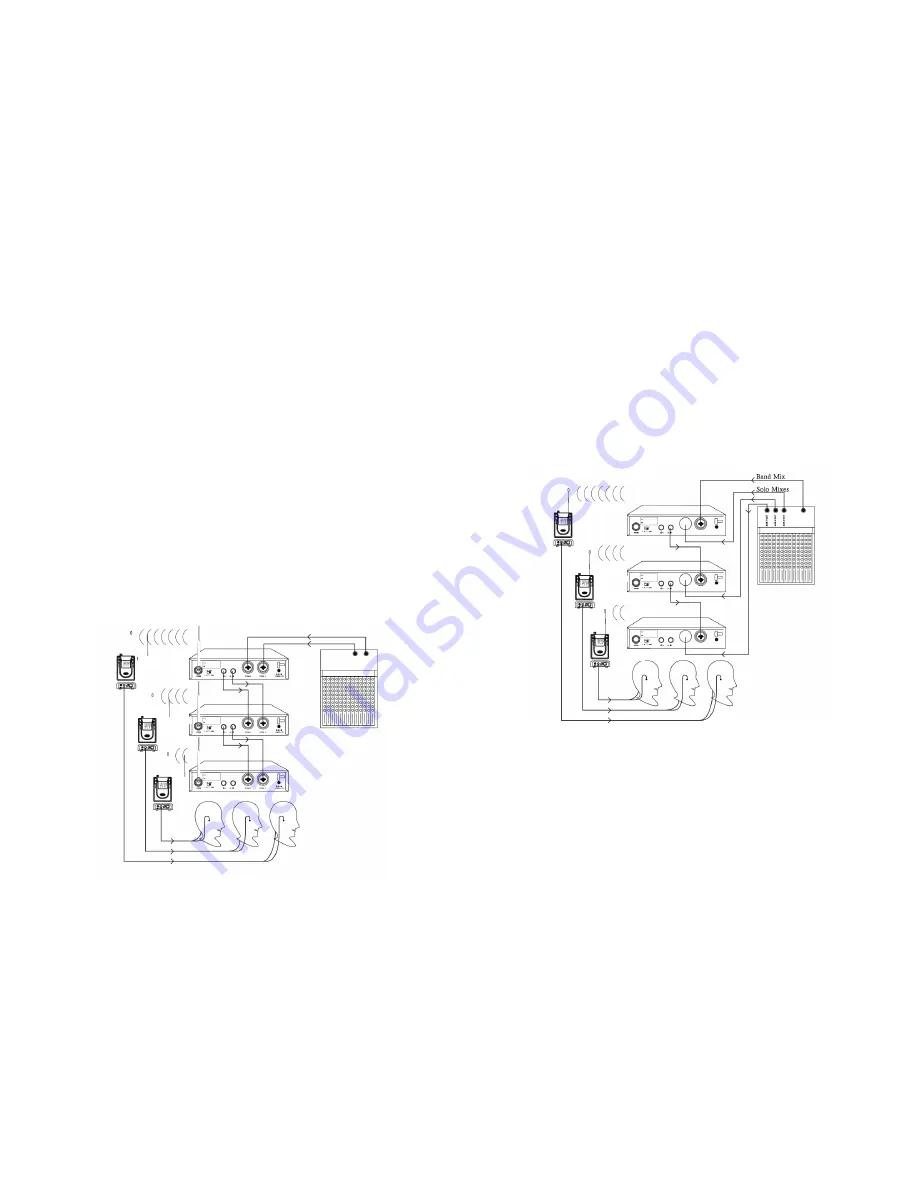
4. Installation
(1) System Installation
LOOP Applications
Use the Loop OUT L (left) and R (right) outputs to send a copy of the audio signal
going into the transmitter to other devices. Shown here are a few examples of the
many configurations for the LOOP outputs.
NOTE: The input level control and the input pad do not affect the level of
the LOOP signals.
Stereo for multiple Systems
Use the LOOP OUT connectors to send one stereo signal from the mixing console
to multiple IEM 4.16-RX wireless transmitters. This frees up outputs on the mixing
console for other uses.
Connect the first transmitter to the mixer.
Connect the next transmitter to the first transmitter‘s LOOP outputs. Form
a chain using all transmitters in your installation.
IEM S4.16-RX
IEM S4.16-RX
IEM S4.16-TX
IEM S4.16-TX
IEM S4.16-TX
6
7
Mix Mode for Multiple Systems
Some performers need to hear more of their own voice or instrument while others
want to hear more of the band. With this setup, each performer hears a
combination of the whole band and their own instrument and the performer can
use the receivers balance control to create the desired mix of the whole band to
input 2 of the first transmitter. Connect input 2 of the next transmitter to the
LOOP OUT R output of the first transmitter. Continue the chain with all the
transmitters. Next, create sole mixes for each performer using the auxiliary
outputs of the mixing console. Send these mixes to input 1 of each performers
transmitter
IEM S4.16-RX
IEM S4.16-RX
IEM S4.16-RX
IEM S4.16-TX
IEM S4.16-TX
IEM S4.16-TX
IEM S4.16-RX
(2) Power Installation
Connect the output port of the DC12V-15V/800mA to the input of the DC
Power of the transmitter.
(3) Turn On Power
Press the power button and the LCD will illuminate, meanwhile more
information will be displayed and will output the transmitting
signal once the PLL circuitry is locked



























